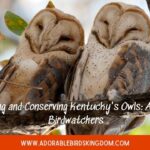New York’s vibrant birdlife is a sight to behold, and among the many species, it’s the red birds that often steal the show. With their striking plumage, these feathered friends add a splash of color to the city’s parks and gardens.
From the brilliant red of the Northern Cardinal to the rusty hues of the American Robin, there’s a surprising variety of red birds in the Big Apple. Whether you’re a birdwatcher or just a nature lover, spotting these vibrant creatures is a real treat.
In the hustle and bustle of New York, these red birds serve as a reminder of the city’s rich biodiversity. So next time you’re in the city, keep an eye out for these crimson aviators. They’re not just beautiful to look at, they’re also an integral part of New York’s ecosystem.
The Northern Cardinal: New York’s Iconic Red Bird
Strolling through the parks and gardens in New York City, there’s one bird that continually catches my eye, the Northern Cardinal. This strikingly vibrant bird is more than just a pretty face, it’s an integral part of New York’s ecosystem.
Known for their bold red color and distinctive crest, Northern Cardinals are easy to spot, even for the casual birdwatcher. Males are brilliant red all over, while females sport a more subdued, yet equally beautiful shade of reddish-brown. Both sexes display a black “mask” that adds to their appeal.
Northern Cardinals are not migratory. That means they grace the NYC skyline all year round. During the frosty winter months, their brilliant red feathers contrast starkly against the white snow, adding a bright pop of color that enlivens the winter landscape.
A unique feature that sets Northern Cardinals apart is their incredible vocal range. Both males and females sing. In fact, the Northern Cardinal is one of the few bird species where females regularly sing. Their songs are rich, varied, and pleasantly melodious which contributes to the soundtrack of New York City.
Their diet mainly consists of fruits, seeds, and insects. Catering to their dietary needs, many New Yorkers keep bird feeders filled with sunflower seeds, a cardinal favorite.
Here’s a snapshot of the Northern Cardinal’s typical features:
| Feature | Details |
|---|---|
| Color | Vibrant red (males), reddish-brown (females) |
| Presence in NYC | Year-round |
| Diet | Fruits, seeds, insects |
Their aesthetic beauty and delightful song make Northern Cardinals inseparable from New York City’s urban fabric. In every sense, the Northern Cardinal does justice to its title as New York’s Iconic Red Bird. The presence of these beautiful creatures in the city makes the urban landscape more exciting and colorful. So, next time you step out, keep an eye out for these red beauties, they are sure to bring a smile to your face.
American Robin: A Common Sight in New York
Pushing past the popularity of the Northern Cardinal, there’s another red bird worthy of attention — the American Robin. One can’t help but appreciate these resilient birds as they strut across the lawns, rummaging for earthworms after sunrise and sunflower seeds in the feeding stations.
The American Robin is indeed a common sight in New York, with its distinctive red-orange breast and dark upper parts. You’ve likely seen one perched on a tree branch, energetically hopping across your path, or darting off into the blue skies. Our city is a hub for these birds, particularly in the spring. Alone or moving in flocks, Robins are easily spotted in parks, gardens, and any area boasting a welcoming mix of open spaces and trees.
Their melodious voice is another trait New Yorkers appreciate, giving credibility to their renowned status as “harbingers of spring.” As the chill of winter subsides and the first rays of spring sunshine break through, the American Robin’s song can be heard echoing across the city, signaling the arrival of warmer days.
This bird’s penchant for various types of fruits and berries complements our urban backyard ecosystems and bird cafes. Yet, its healthy appetite extends beyond fruits. Get this: they also feed on insects, earthworms — making them a natural pest control agent!
Like the Northern Cardinal, the American Robin’s presence significantly contributes to New York’s urban vitality. Be it their refreshing songs or their prominent color, these birds manage to add that extra spark to our city’s landscape. Offering more than just a burst of color, Robins truly embody the spirit of resilience and renewal, harmoniously blending into the bustling New York life. Let’s take a moment, now and then, to truly appreciate the beauty of these unique creatures that we share our home with. After all, their vivacious presence is an integral piece of our city’s dynamic urban tapestry.
Red-winged Blackbird: The Call of the Wetlands
Moving into the realm of wetlands and marshes of New York, you’ll encounter the stunning Red-winged Blackbird, another standout in the list of red birds that call the Big Apple home. You’ll easily spot me with my jet black plumage contrasted by scarlet and yellow shoulder patches.
The Red-winged Blackbird, despite its humble size, boasts an impressive vocal range. As a crucial element of New York’s urban soundscapes, my call cuts through the city’s noise, bridging the gap between the concrete jungle and the natural world.
It’s my nature to roost in wetlands and marshy habitats, standing as a staple sight amongst the cattails and reeds. The later winter marks my migration back to my familiar New York territories, heralding the end of the frigid winter season. It’s during this time that my melodious song notably signals a warmer, spring season on the horizon.
Equally fascinating is my varied diet, consisting of insects, seeds, and grains, which contribute significantly to the control of pests. This aspect of my diet underscores my ​contribution to the balance of the urban ecosystem, a role often overlooked.
Undeniably, my presence injects a wealth of vibrancy into New York’s wildlife. The splash of red and my unmistakable song breathe life into the city’s wetlands. It serves as a reminder that wildlife can, and does, flourish amidst urban landscapes.
Relatively unassuming, the role of the Red-winged Blackbird in enriching the city’s natural tapestry often goes unnoticed. Yet, my call from the marshy expanses of the city’s parks echoes an unwavering testament to resilience and adaptability. This plays an important part as an ecological and visual asset that complements the city’s robust nature.
Beyond doubt, the Red-winged Blackbird encapsulates the spirit of survival and adaptability in the face of urban sprawl. This becomes apparent as I continue to thrive, singing my crisp, clean notes from the city’s marshy corners.
Invitation beckons to appreciate the beauty and significance of this bird, and indeed, all of New York’s feathered inhabitants. Understanding their role adds depth to our view of the city’s ecosystems and contributes to the enduring allure of urban birdwatching.
Scarlet Tanager: A Rare Beauty in the Big Apple
As we continue our exploration of red birds in New York, let’s delve into the fascinating world of the Scarlet Tanager, a rare sight in the city that’s worth the wait for birdwatchers and nature enthusiasts alike.
The Scarlet Tanager captivates with its strikingly vibrant plumage. Males sport fiery, almost neon, red bodies contrasted with stark black wings, while females display a more demure shade with an olive-yellow to olive-green color palette. These birds are noted for their elusive behavior. Often, they’ll reside high up in the treetops of the city’s parks, making them a challenge to spot.
An interesting fact about the Scarlet Tanager is its migratory pattern. They typically make the long journey from South America to North America for the breeding season, which happens from late spring to early summer. This timing aligns with the blooming of New York’s flora, making it the perfect period to try your luck at catching a glimpse of this rare bird. In terms of diet, Scarlet Tanagers mainly consume insects but are also known to eat fruits.
Now for the critical question: Where can you find these beautiful creatures amid the hustle and bustle of New York City? The answer is, surprisingly, in the heart of the metropolis.
Central Park is one of the most well-known birding hotspots in the city. However, the Scarlet Tanager often prefers the park’s more tranquil, less frequented spaces. The Ramble, a wild garden in the park, with its dense woodland and quiet trails, is a preferred haunt for these shy birds.
With some patience, a keen eye, and a dash of luck, it’s possible to spot this exquisite bird, symbolizing the vibrant natural diversity existing in New York City.
The ongoing quest for red birds in New York extends the canvas beyond the common birds and brings a touch of rare elegance with the introduction of the Scarlet Tanager into the mix. Isn’t it extraordinary how much natural beauty can thrive in the heart of such a bustling city? Let’s keep our eyes open for more of these vibrant sightings as we continue our journey to rediscover the feathered inhabitants of the Big Apple.
Conclusion
Spotting the elusive Scarlet Tanager in New York’s Central Park is a birdwatcher’s delight. Their vibrant red plumage and shy behavior make them a captivating sight amidst the city’s hustle and bustle. Their migration from South America to North America during the breeding season adds a dash of exotic color to New York’s blooming flora. It’s a testament to the diversity of birdlife in the city, and to the resilience of nature. So next time you’re in Central Park, keep your eyes peeled for a flash of red in the trees. You might just spot one of these rare beauties. The quest for red birds in New York is an adventure that’s worth every moment.



